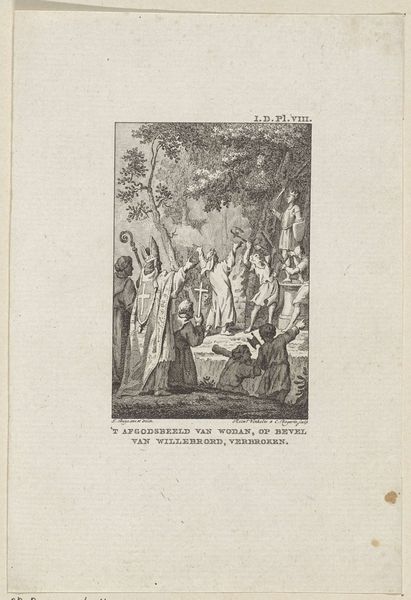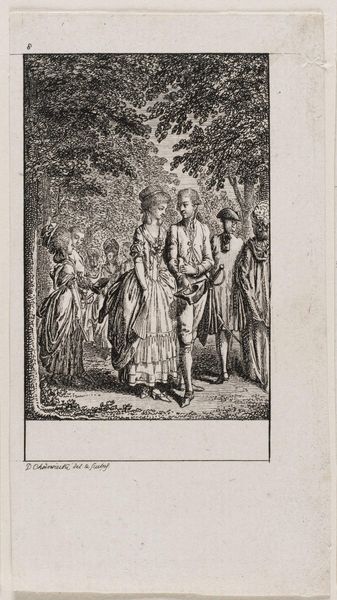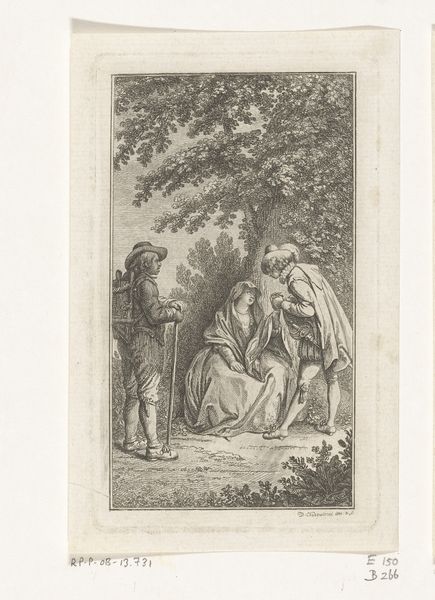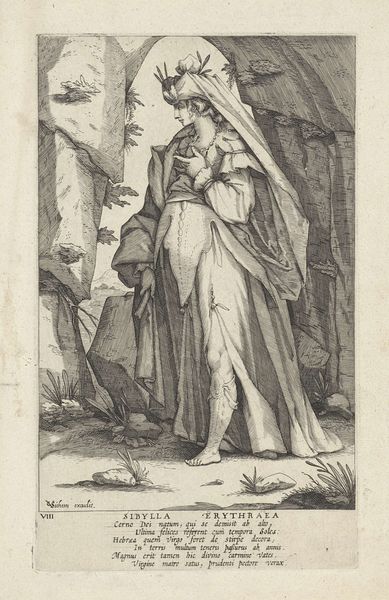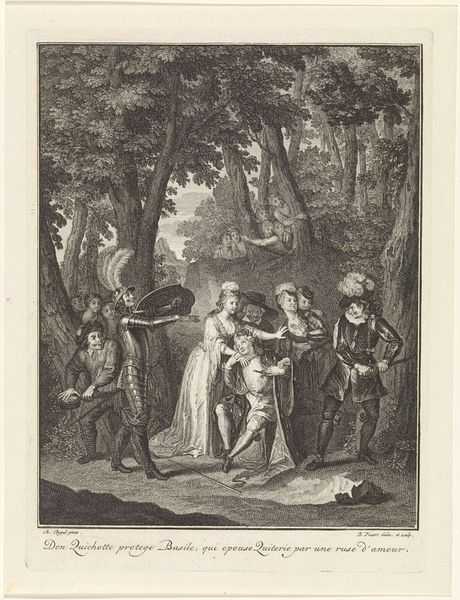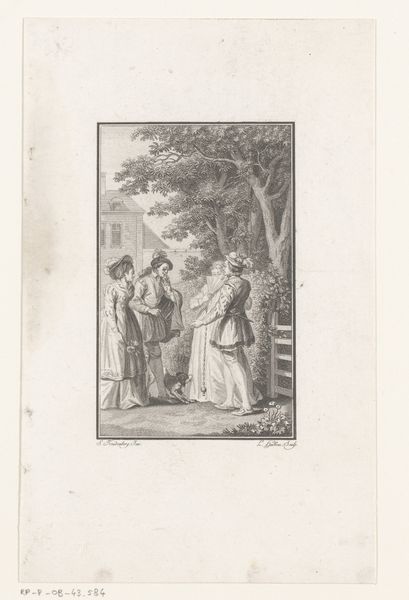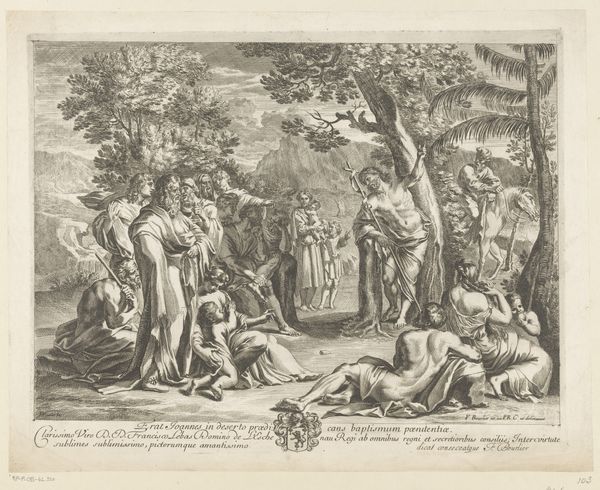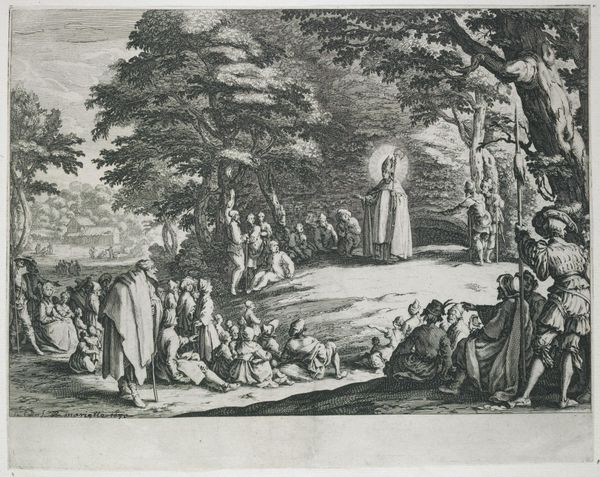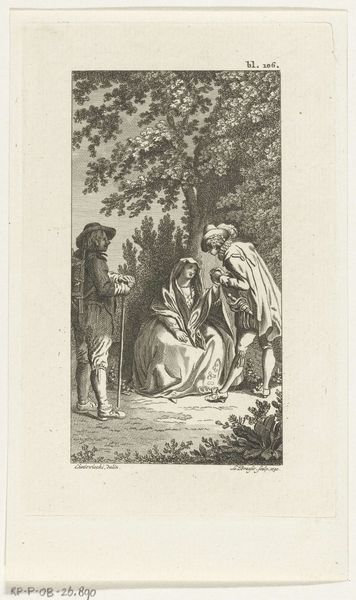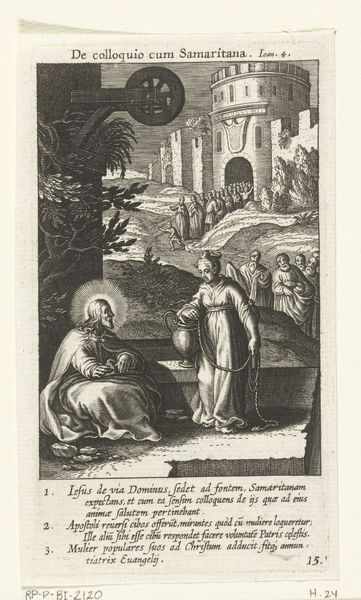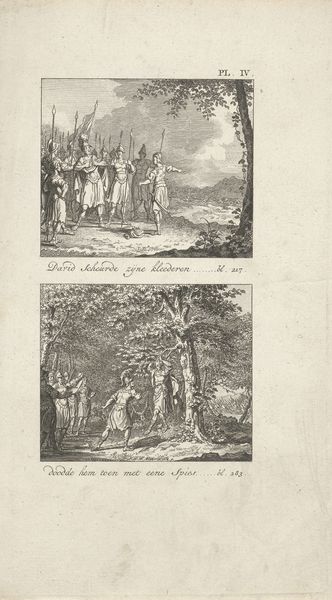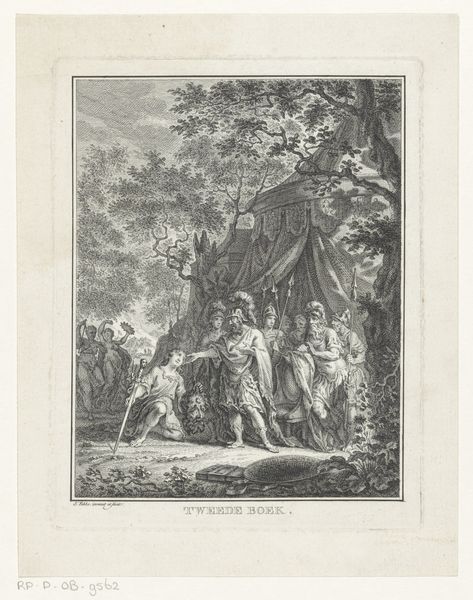
print, engraving
#
narrative-art
# print
#
old engraving style
#
landscape
#
figuration
#
romanticism
#
genre-painting
#
engraving
Dimensions: height 155 mm, width 95 mm
Copyright: Rijks Museum: Open Domain
Curator: Here we have “Gezelschap bij een op de grond liggende figuur tussen bomen,” which translates to “Company with a Figure Lying on the Ground Among Trees." Daniël (I) Veelwaard created this engraving in 1823. Editor: It feels incredibly staged, doesn't it? Like a theatrical tableau. Everyone is frozen, gazing in a specific direction. There's something almost melancholic about the stillness. Curator: Well, engravings of this era often served as illustrations for stories. Knowing that it’s a narrative scene shifts your perception a little, doesn’t it? It adheres to conventions prevalent in early 19th-century Dutch art, placing common folk in heightened scenes that tell some kind of story. Editor: True, situating it as part of visual storytelling adds another layer, a social commentary perhaps? Look at the clearly defined classes here. The affluent family in the centre are elegantly framed against a very artificial backdrop. Then to the side we have labourers scrambling in the dirt as one falls over. Are they observing class division as they watch the "lower" classes hurt themselves? Curator: It’s interesting you bring up social commentary, because I agree the placement is interesting. Veelwaard's prints often engage with the moral anxieties of his time, and consider questions of responsibility in this context. Who exactly is supposed to bear the consequences of any entertainment is certainly being pondered by Laura, apparently. It says so at the bottom of the artwork! Editor: It really makes you consider art's power in shaping social values at the time. Was Veelwaard supporting a conservative worldview, highlighting what he believed where examples of good behaviour? Curator: Perhaps he felt these characters existed beyond reproach, which reflects much about the social standards. This particular print definitely prompts viewers to dissect assumptions of decorum in relation to the hierarchy of status, which prevailed at that point. Editor: That's a strong point, looking at the image through the lens of social politics helps clarify it's intentions and it's influence. It makes the piece feel much less passive. Curator: Exactly, by analysing the roles within this gathering and how it spoke to audiences and continues to, we're seeing how art and popular stories can both influence culture in fascinating, layered ways.
Comments
No comments
Be the first to comment and join the conversation on the ultimate creative platform.
